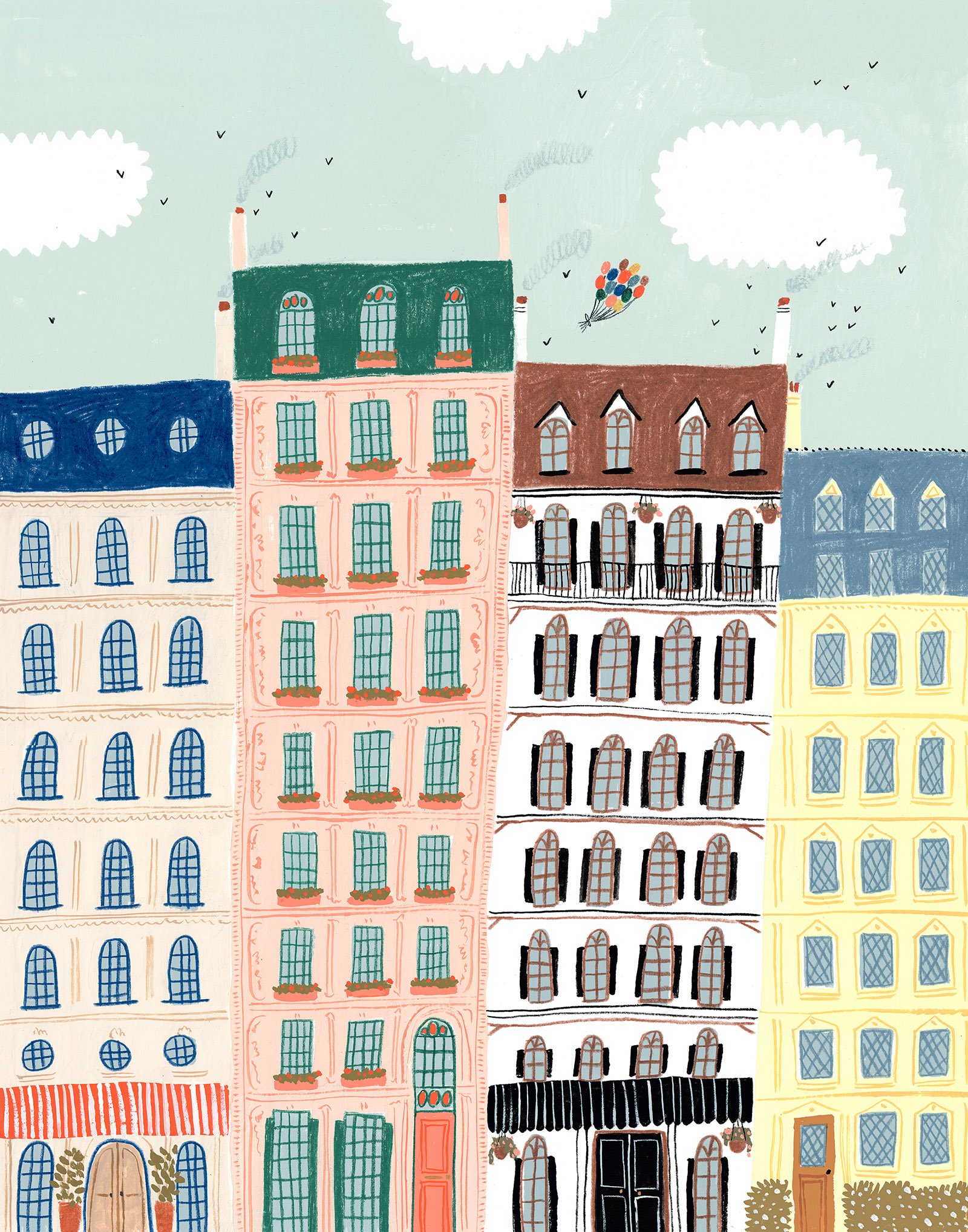Why I Always Finish My Paintings
As you all know, I’ve been hard at work on my membership program (coming 8/1) and courses. That hasn’t left much time for painting. So I’m a little rusty.
This past week, I started illustrating an 11x14 piece of Parisian-style houses. I knew early on that I didn’t love it. I used a lot of colored pencil. Too much. It started to have a juvenile feel. It didn’t look like something I would normally make.
This wouldn’t be the first time I’ve felt this way about a painting. It happens all the time. I’m sure you know the feeling. The question is, what’s the best course of action when this happens?
Early in my art adventures, I would berate myself in the middle of every bad piece, claiming I’ve lost my mojo. I would crumple up my art and throw it away. Then, I’d walk away from my desk for days until I worked up enough confidence to start something else.
Now, I see I was missing a major learning opportunity. As an older and wiser artist, I force myself to finish my art.
Art is like a recipe. We’re looking for the perfect combination of mediums, forms, textures, and colors to create a beautiful piece. When something goes wrong, it’s important to keep going so we can develop the skill of problem solving - the most important skill an artist can possess.
When we stop a piece early, we don’t get to see where it goes. Similar to baking a cake and stopping in the middle. Often, I make the call too early. I think a piece is heading in a bad direction, only to end up with one of the best things I’ve ever made. We have to get the cake to the oven to see if we’ve made something good.
It’s important to realize that disliking a piece midway through is part of the process. It puts us at a crossroads where we learn to problem solve, but only if we push forward. It’s true, I’ve had many pieces I didn’t like from start to finish. And so what? I now have enough confidence as an artist to finish the piece and say, “It wasn’t one of my best.” That doesn’t mean I’ve lost my mojo. In fact, it means I’ve had a major learning opportunity. I know exactly what not to do next time. And this information is priceless. These “bad pieces” are the ones we learn the most from. For example, I know not to use too much colored pencil on the next buildings I paint.
In summary, ending up with a piece you don’t like can be one of two things. It can be a confidence crusher or a learning opportunity. And you get to decide which one it is. If you stop early, it’s sure to become a confidence crusher. If you finish a piece, it will be a priceless learning opportunity. And you might even end up with something you love.
Remember, when you don’t love a final piece, you get to decide if you let the world see it. It’s normal to keep a file of art for your eyes only. If you do decide to share it, you may find everyone else loves it despite how you feel. Art is funny that way. And remember, everything you illustrate won’t be portfolio worthy. For every five things I paint, I probably love one of them. However, the one piece I love wouldn’t be possible without the four pieces I don’t.
So, next time you want to crumple up your art and throw it away, finish it and see what happens. This is the fast track to becoming a better artist.
My final painting…
While this will never be one of my favorite pieces, it didn’t turn out as awful as I thought it would.
Ironically, the last building I painted was my favorite (the one on the far left). Completing the sky with balloons and birds really gave the piece some character as well.
I learned a lot from this piece, so I’m glad I finished it.












Thanks for stopping by! I’m an illustrator & writer. I’ve been running my own creative business since 2015. My mission is to help artists find their unique creative voice, build positive habits, and do what they love for a living.